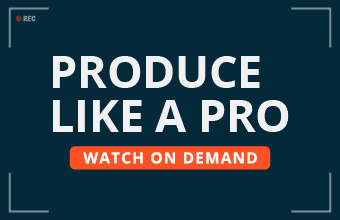As a marketer, you can feel the effects of summer approaching—out-of-office replies become plentiful, and engagement begins to wane on pieces that once saw a blooming number of form submissions and call-to-action clicks.
Before you know it, you’re in the middle of it: the dreaded summer lull, that special time every year where it feels as though almost every person you’re trying to engage with is conveniently away from the office.
But just because your audience is on vacation, doesn’t mean your organization should be—especially when it comes to marketing and communications. Though business may be slow, you’re faced with a great opportunity to get ahead of your communications efforts! (Really, who needs a tan anyways…?)
Communications pros: Don’t let the summer lull impact your productivity. Here are seven simple tips you can use to make the most out of your business’s quiet time.
Become a content-generating machine
Just because one department in your organization may be experiencing some slowness doesn’t mean all departments will. Have every member of your company contribute to your content marketing efforts by picking up new skills like social media and community management, or by contributing to the blog.
Here are some simple ideas to turn your entire company into a content-generating machine:
- Create a blog bank that every member of your organization can update—consider using a crowdsourcing, cloud-based software like Google Docs;
- Keep an eye on what your competitors are publishing, and create a list of ideas that you can put a new twist on;
- Have a different department look at common problems in your industry and ask how they would address them—you might be surprised at the blog fodder this can produce;
- Read the comments sections of large industry publications and see if there are some new pain points you can alleviate. Bonus: You can even link to the new article in the comments once it’s been published;
- Let someone new operate your corporate social media account each day—you’ll be impressed by the variety of different, yet relevant, content that is shared and the amount of engagements you’ll get by adding personalities to your social channel. Note: Make sure to establish guidelines before letting co-workers run free on social media;
- Encourage co-workers to write about their passions and have them relate it back to your product/service and your organization’s offerings.
SEO! SEO! SEO!
A lull can give your department the time it needs to evaluate recent marketing efforts, create benchmarks, and optimize existing content. One of the most productive ways your organization can leverage its slow period is by working on your site’s internal linking.
Use the following steps to strengthen and reorganize your existing content to be even more effective during busy times:
- Create a spreadsheet of all your existing content and the keywords you’re trying to rank on. Hubspot offers a great template on which you can base your own efforts: On-Page SEO Template. Completing this task will ensure that you (and your department) have a global understanding of your current published content and how effective your SEO efforts have been.
- Review these articles and update them with links to other relevant, pre-existing content. For example, you may have published an article related to X since you’ve published Y, so make sure that they link to each other accordingly!
- Have you realized that a lot of your content is competing to rank on the same keyword? Identify secondary keywords that you can use to mitigate competition and increase your search engine rank.
Use Google AdWord’s Keyword Planner to identify keywords that you can gear new content toward. Remember, diversity helps increase your ranking!
Invest in mobile marketing
Did you know that 64% of American adults now own a smartphone? Your audience may not spend their vacation on their computers, but there’s a big chance they’ll still be using their phones.
Consider shifting your organization’s advertising budget to optimize mobile ad bids, regardless of which platform you’re using (Google AdWords, Facebook Advertising, Twitter Ads, etc.). You might notice an increase in engagements in page views despite the summer lull—after all, 70% of mobile searches lead to an online action within an hour.
If you’re a retailer, consider creating new offers strictly for the summer. Signing bonuses or discounts on popular products are great ways to entice your target demographic to take their focus off of their vacation for one moment and take a look at your product or service. If you’re a niche product, or can’t afford to offer a discount on your product or service, experiment with different copy and product offerings to see what sticks with your target demographic.
Work on smaller projects that can become bigger projects
Has your business ever considered the amount of money that goes into creating content? Think about it in relation to salary and time. First you’re paying an employee to create the content, someone else to proof it, and possibly a third person to create promotional messaging and graphics to promote the content. Cumulatively, this could take approximately 4-5 hours to complete.
Like having irrelevant media monitoring results, creating irrelevant content is a detriment to both your audience and your business—so how do you ensure you’re getting the most out of your content?
Consider creating a campaign that has multiple content components. For example, in the summer of 2015, MediaMiser conducted an industry poll to identify the largest industry pain-points; the poll was promoted through both social media and email marketing. Once the poll was complete, MediaMiser then tasked five different employees to each write strategic blog posts addressing the top-voted pain points. Lastly, at the beginning of 2016, all five blog posts were repackaged and designed as a whitepaper: How to achieve the communications industry’s six common objectives. Email marketing and social media were then used as large instigators for downloads, and MediaMiser was able to capture even more lead information.
All of the different components were self-serving when they were created, but were also used to leverage additional projects. Implement this type of lean thinking during your organization’s slow period and you’ll be creating cost-effective content marketing projects in no time.
Spend more time on social media
Similar to your target demographic avoiding their computers, they might also be avoiding their work emails. However, most people will continue to use social media to engage with their co-workers, relatives, and friends when they are on vacation.
Giving up emails for a week might be easy, but Facebook or Twitter? Never.
Use your summer lull to actively engage with your followers and to build your communities on social networks. You can even begin implementing a social customer service strategy—that way you’ll be in the swing of things once business begins to pick up again!
Experiment with different types of content
Does your business create infographics? Consider creating a blog-based infographic. Let me explain. When you create an image, you have little room for “alt text”. This alt text is reserved for accessibility standards, and is used to describe the image that it represents. However, when you’ve created an infographic that depicts a plethora of information, your alt text is limited.
You’re losing SEO value and the mobile optimization potential when you’re just creating an image file. That’s why you should create more word-based content. Write out your text as you would a typical blog post, and enrich it with separate images. Boom! Great content with an even better impact on your SEO and blog-creation efforts.
Consider too creating different content from your existing content. Have a listicle that has performed particularly well? Create a Slideshare out of it. Have a bunch of blog posts that share the same over-arching theme? Create a guide or eBook.
Great content has endless possibilities, so use your company’s slow-time to identify these possibilities and to recycle awesome content!
Audit your media monitoring efforts
Like we’ve written about previously, the summer lull is a perfect time to look at your current media monitoring efforts and to identify areas of improvement. MediaMiser has made this process even easier by providing a D.I.Y. media monitoring audit and keyword planner.
Maybe your business doesn’t even have an established media monitoring and analysis program! MediaMiser can help. Contact us and speak to one of our Media Monitoring Experts to discuss your options and how MediaMiser can help.
How does your business combat the summer lull? Let us know in the comments below!









